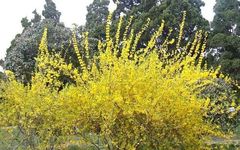Lian Qiao (Latin name: Forsythia suspensa): A deciduous shrub belonging to the Oleaceae family. Lian Qiao flowers before the leaves in early spring, producing fragrant, delicate yellow flowers that cover the branches, making it a beautiful ornamental shrub. It can grow up to 3 meters tall, with clustered branches that are yellow and arching downwards, hollow inside. The leaves are opposite, either simple or trifoliate, ovate or ovate-elliptic with serrated edges. The flower corolla is yellow, with 1-3 flowers blooming in the leaf axils; the fruit is ovoid, ovate-elliptic, or elongated-elliptic, with a beak-like tip and a surface with sparse pores; the fruit stalk is 0.7-1.5 cm long. The flowering period is from March to April, and the fruiting period is from July to September. It grows in shrublands, under forests, or in grasslands, in valleys or sparse forests at altitudes of 250-2200 meters. The fruit can be used medicinally. It is produced in Hebei, Shanxi, Shaanxi, Shandong, western Anhui, Henan, Hubei, Sichuan, and other regions of China.
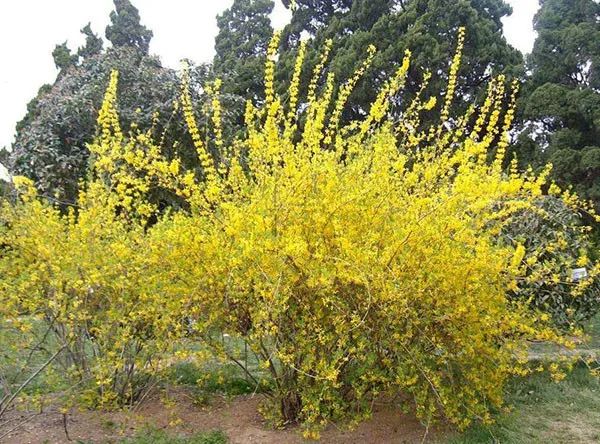
According to the Compendium of Materia Medica, Lian Qiao has the effects of clearing heat and detoxifying, reducing swelling and dispersing nodules, making it one of the commonly used traditional Chinese medicines in clinical practice, often used to treat acute wind-heat colds, lymph node tuberculosis, and other conditions. In daily life, the fruit of Lian Qiao is often combined with honeysuckle in medicinal preparations, such as “Vitamin C Lian Qiao Tablets” and “Shuang Huang Lian Oral Liquid.” In addition to its medicinal use, it is also used as a natural food preservative or in cosmetics, and is an important oilseed crop, ornamental plant, and soil conservation plant. The Ming Dynasty scholar Yang Wei recorded Lian Qiao in his work Ping Ding Li Shi Yu Ying Shi Yu Zhi Tong Nian You Zeng Shi Yu Bing Gan Zhi Ji Ci, stating, “I remember on the Ren family pavilion, the Lian Qiao flowers bloom while holding cups.”
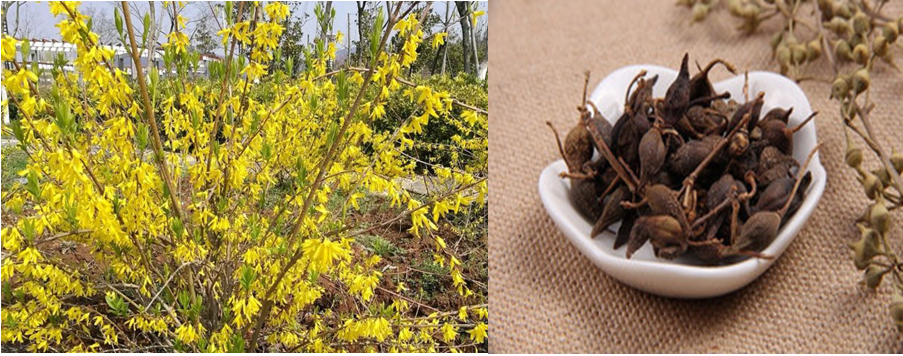
Speaking of Lian Qiao, there is a little-known story. On Qibo Mountain in Xinmi City, Henan Province, there is a place called Dachenggou, where Lian Qiao grows abundantly. It is said that 5,000 years ago, Qibo gathered and cultivated herbs here. Qibo had a granddaughter named Lian Qiao. One day, while gathering herbs on the mountain, Qibo accidentally poisoned himself while testing a herb, foaming at the mouth and losing consciousness. In a critical condition, he kept shouting: “Lian Qiao, Lian Qiao!” Seeing her grandfather in serious danger, Lian Qiao cried out for help, “Save me! Save me!” After calling for a long time without response, she, in desperation, crushed some green leaves nearby and stuffed them into her grandfather’s mouth. After a moment, Qibo slowly regained consciousness, swallowed the green leaves, and after a while, he returned to normal. Lian Qiao helped her grandfather back home for medicinal and dietary care, and Qibo gradually recovered. From then on, he began to study this green leaf, discovering its excellent heat-clearing and detoxifying properties through multiple experiments. He recorded this green leaf in his herbal compendium, naming it Lian Qiao after his granddaughter, and planted many Lian Qiao in Dachenggou, a story that has been passed down to this day.
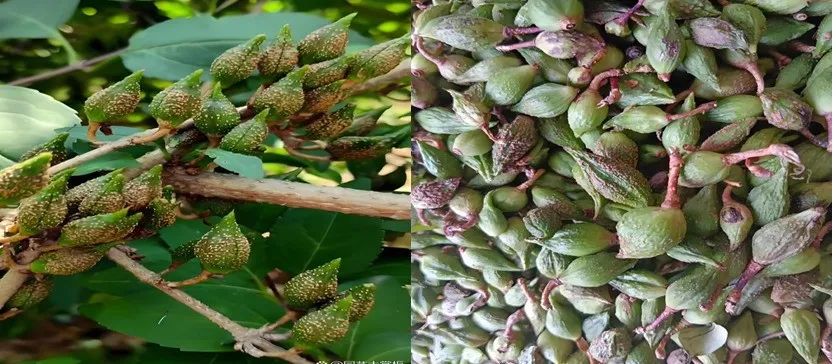
Wulian County has a long history of cultivating Lian Qiao. Every spring, the scenic areas of Wulian Mountain, Jiuxian Mountain, and Daqing Mountain are adorned with clusters of bright yellow Lian Qiao flowers, adding beautiful scenery to the spring landscape. According to the Wulian Medical Chronicle, in 1959, to accelerate the development of traditional Chinese medicinal resources in the county, administrative measures were taken to reward and support the utilization of key varieties. Five bases for honeysuckle were developed in Songbai, Jietou, Kouguan, Zhongzhi, and Hubu communes, totaling over 100,000 plants; six bases for Lian Qiao were developed, totaling 1.7 million plants; and five bases for sour jujube were established. In 1976, 300,000 Lian Qiao plants were cultivated in Jietou and Wang Shitian, with a survival rate of over 60%. At the same time, 2,744.5 kg of medicinal seedlings were supplied to the brigade, solving the herbal needs of the cooperative medical team with 122,000 kg of herbs.
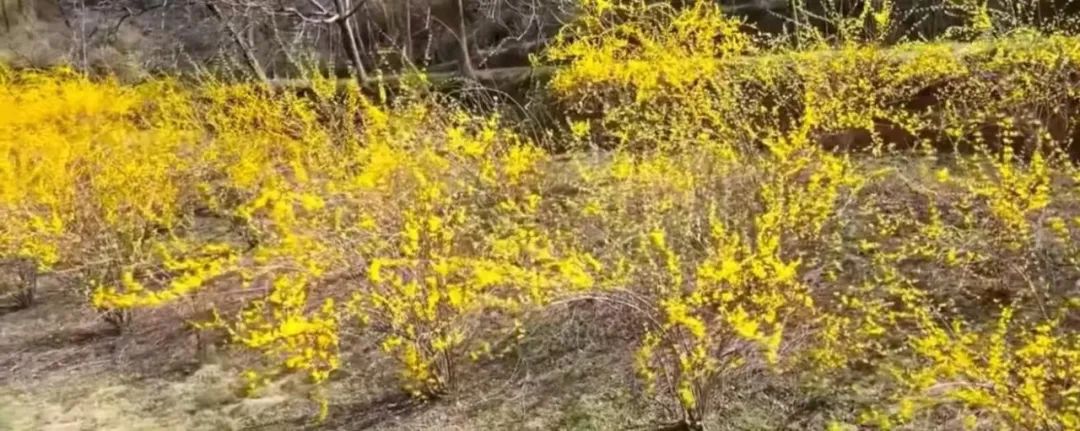
There are many methods for propagating Lian Qiao, including division, cuttings, layering, and seed propagation. Seed propagation is slower and only suitable for new production areas. Generally, Lian Qiao is mainly propagated by cuttings.
The key points for Lian Qiao cutting propagation are: 1. Cutting Time. Lian Qiao is suitable for cutting in spring or summer, with spring cuttings typically done in early March before the buds swell, and summer cuttings usually chosen around July before the heat sets in. 2. Selection of Cuttings. Choose healthy, vigorous Lian Qiao plants and cut healthy branches about 20 cm long, ensuring they are free from pests and diseases, and preferably with well-developed buds. 3. Treatment of Cuttings. After cutting, do not soak them in water; instead, immediately prepare them in the dark. Use the branches wisely, generally controlling the cutting length to 10-15 cm, keeping 2-3 small buds on each segment. After treatment, bundle them in groups of 50 with the buds facing up, and soak the lower 1/4 of the cuttings in rooting powder for 2 hours. 4. Site Selection and Soil Preparation. Choose well-drained, loose, and fertile soil, preferably in sunny areas. Before cutting, deeply plow the soil to ensure it is loose, non-toxic, and free of insect eggs. 5. Inserting Cuttings into Soil. When inserting, use a stick to make holes, spacing them 5 cm apart and 10 cm between rows, inserting the cuttings halfway into the soil and compacting it as you go. 6. Post-Cutting Management. Water immediately after cutting, then water again every 5 days for a total of 3 times. The cuttings will take about 1 month to root. Once the seedlings have rooted, manage them like normal seedlings, watering once a month without frequent watering. However, apply light fertilizer regularly, preferably urea at 10 kg per mu.
There are many methods for propagating Lian Qiao, and the specific method should be determined based on actual planting conditions. The cutting propagation method is commonly used, and it can be done in spring or summer. However, it is important to distinguish between ornamental Lian Qiao varieties and medicinal Lian Qiao varieties.
Lian Qiao is a unique plant, cherished for its early spring flowering habit, delicate fragrance, vibrant yellow color, and medicinal value. Whether as an ornamental plant in landscaping or as a medicinal plant in traditional Chinese medicine, it showcases its unique charm and value.
Written by: Zhang Peibo
Initial Review: Li Guohua
Final Review: Li Duanquan

